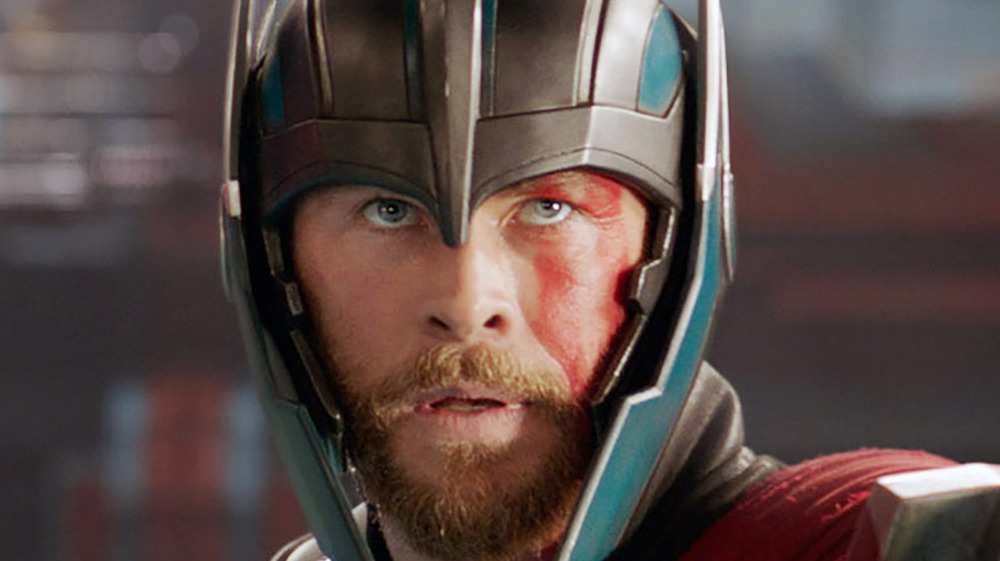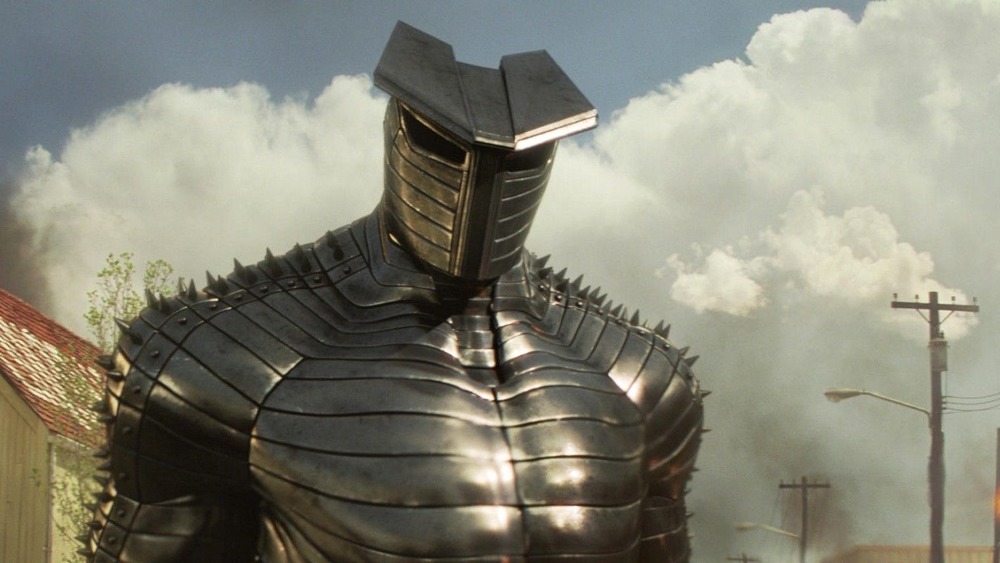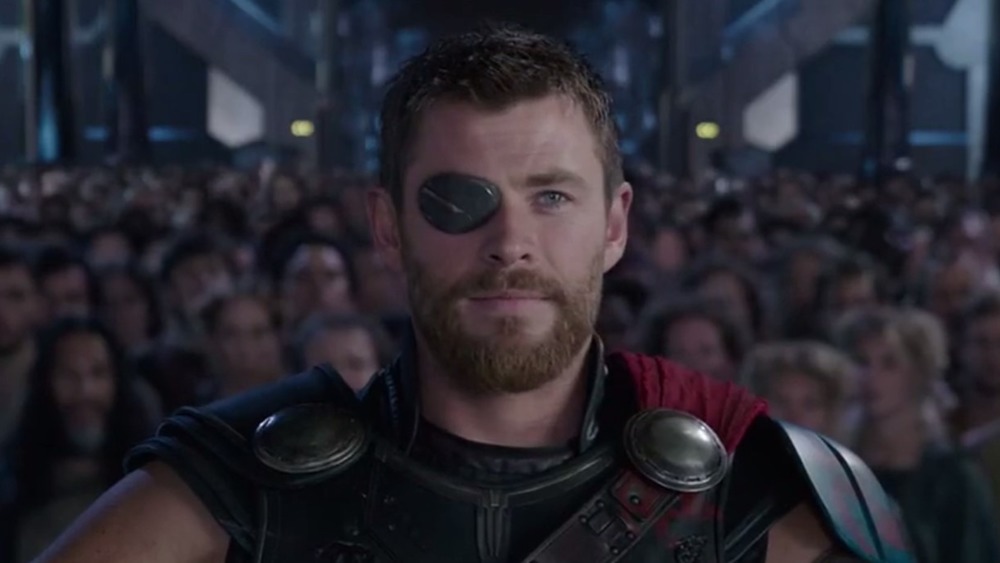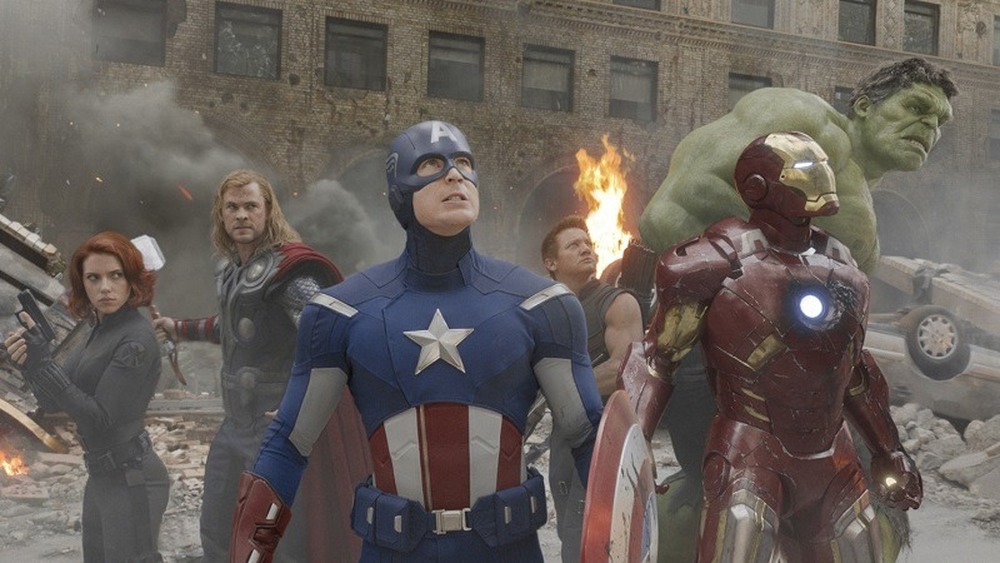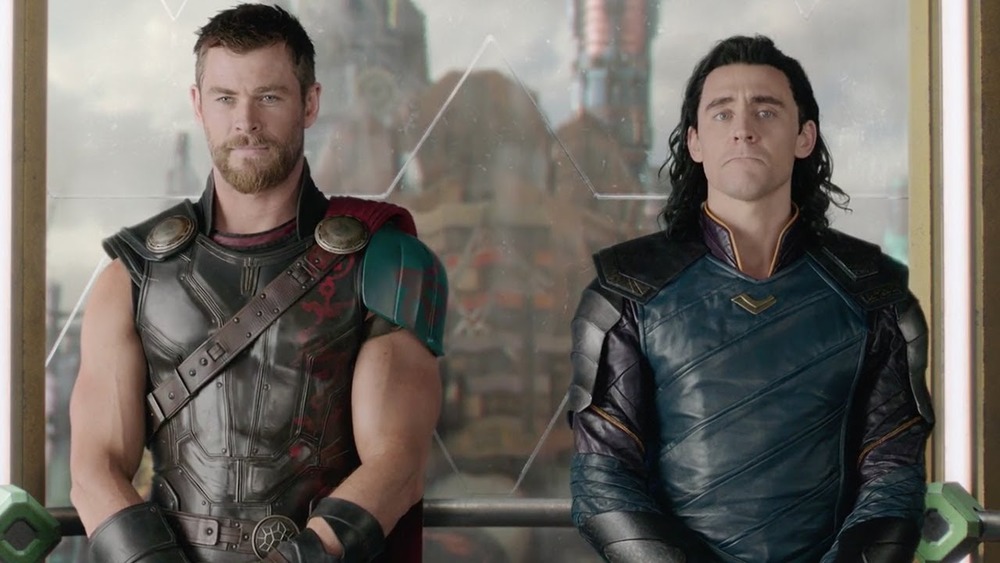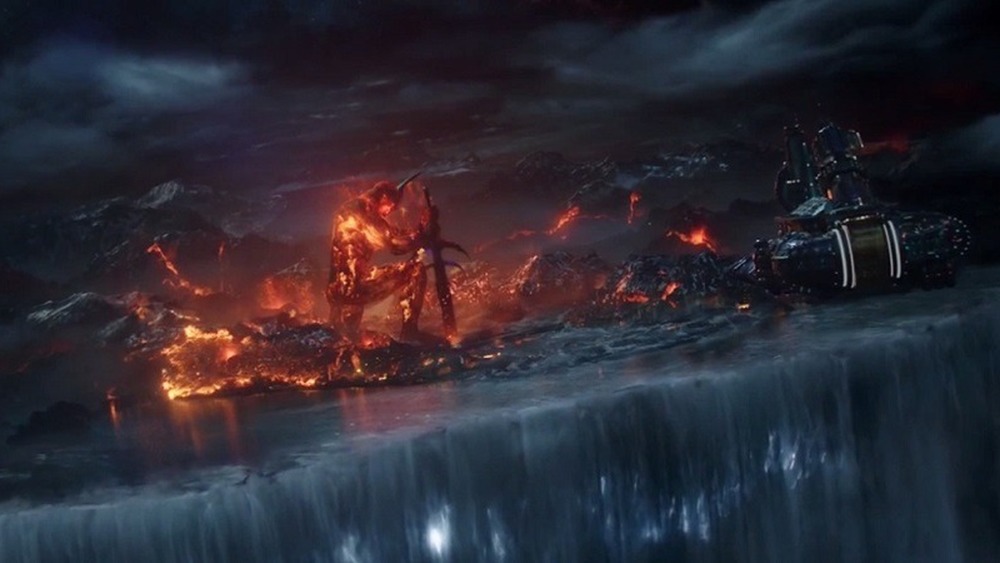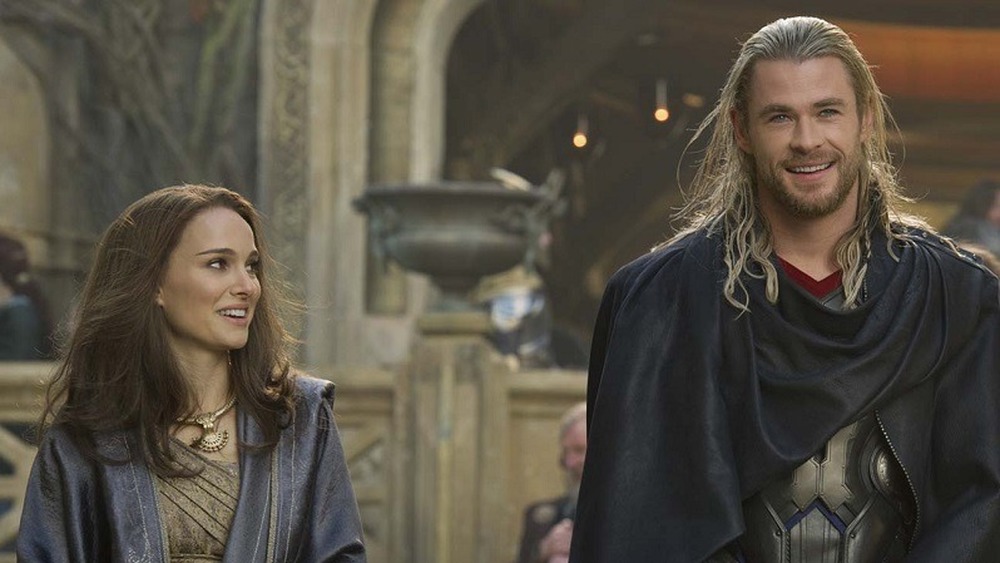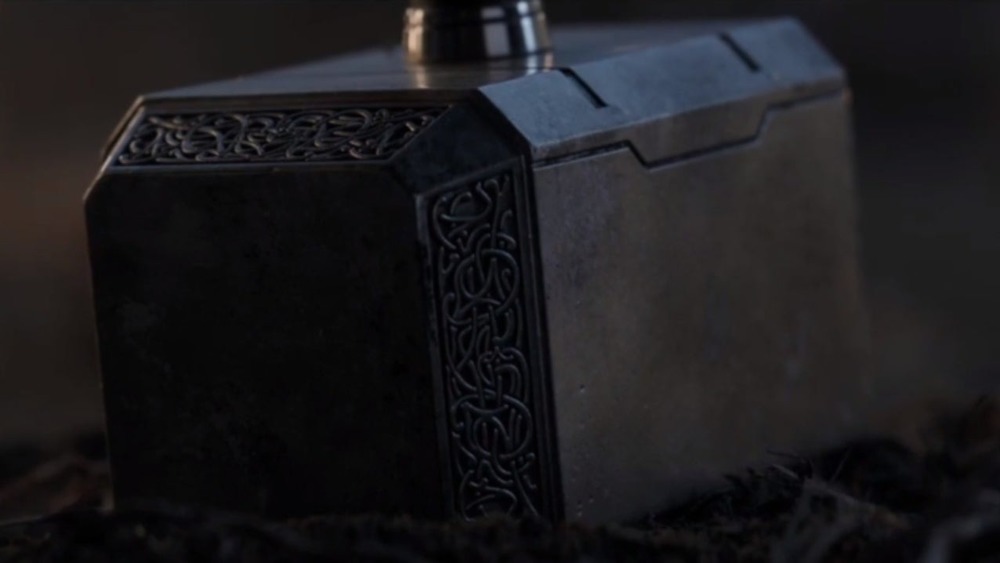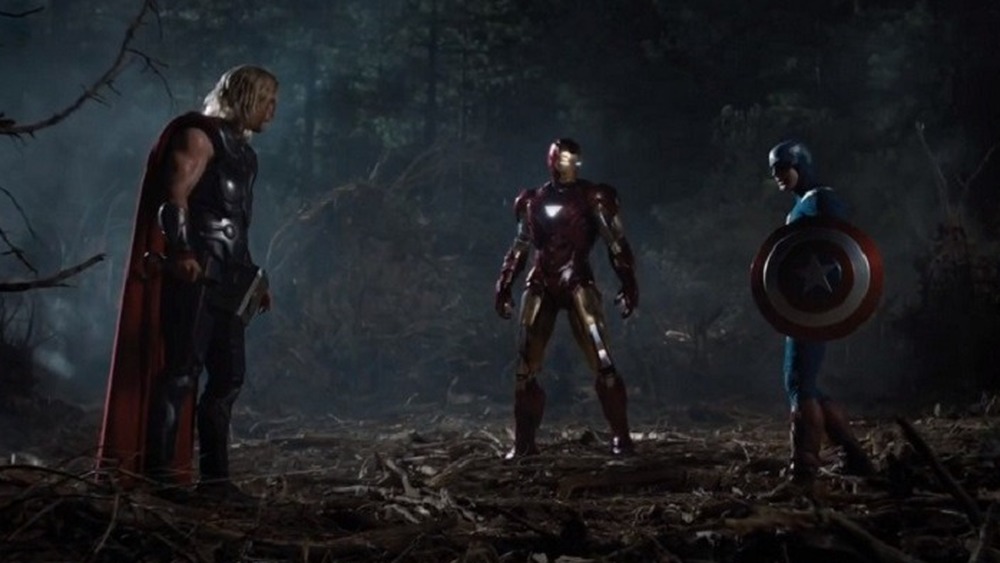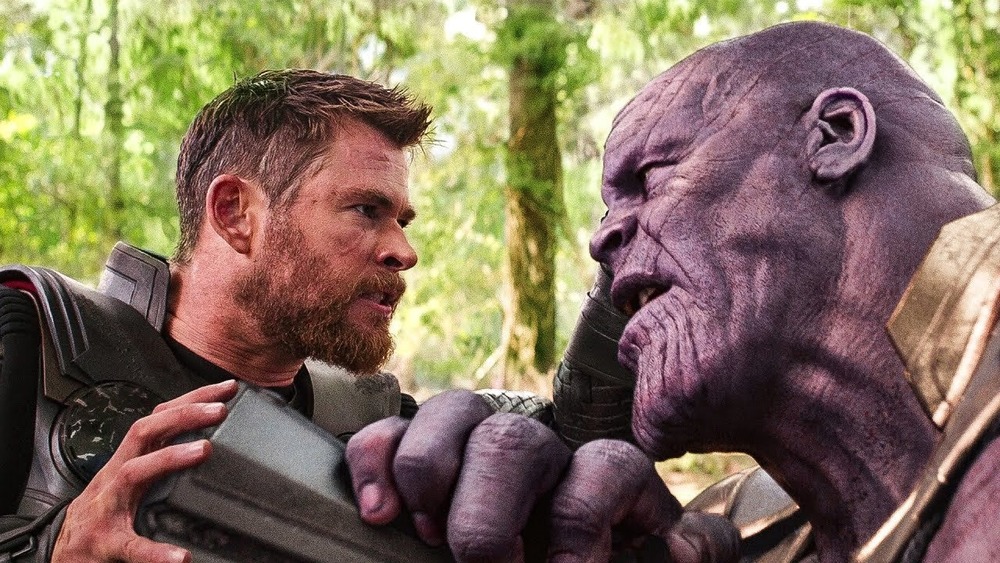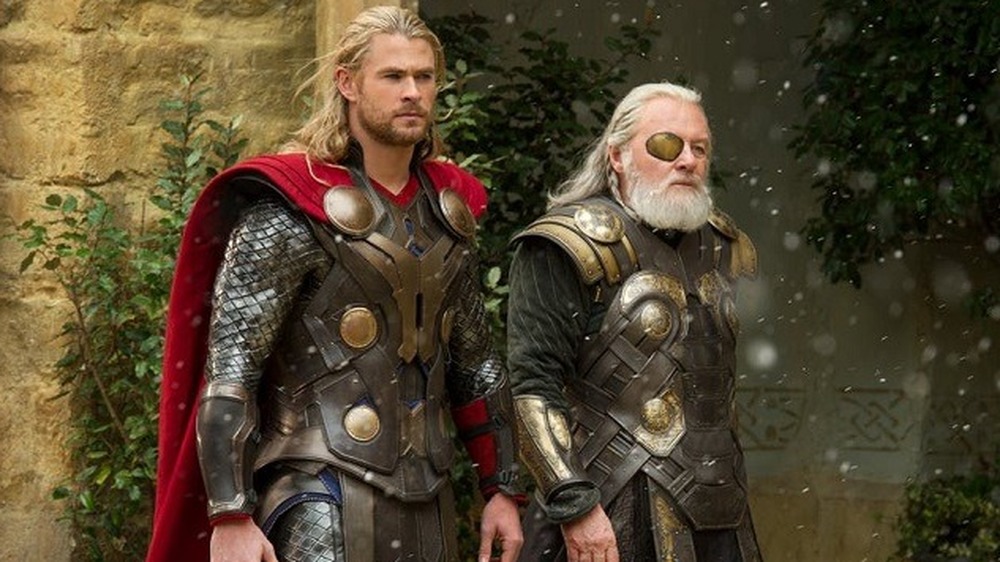Rules Thor Has To Follow In The MCU
Thor is the god of thunder, heir to the throne of Asgard, and the Avengers' biggest gun. His godlike power has always been a major part of his appeal, both in the comics and in the Marvel Cinematic Universe. His ability to channel his control over thunder and lightning through his dwarven-forged hammer, Mjolnir, also allows him to fly and wreak a lot of havoc on Frost Giants, fire demons, and aliens. He has a huge appetite for life — and also for food and drink. His indomitable fighting spirit is not unlike Captain America's. Above all else, Thor is a loyal friend and comrade in battle, always willing to put himself on the line.
Thor is indeed an inspiring hero, but it's his weaknesses and quirks that make him interesting. His passion for battle and justice often lead him to think with his fists. He's also impulsive, arrogant, and always thinks he's right, a quality that makes him easy to deceive. Though he's supposed to rule Asgard, he doesn't have the patience, temperament, or guile to be a leader.
The MCU has made these weaknesses and quirks clear through a number of implicit rules that shape who Thor is. Fighting against these limits and rules is what has made the character evolve — they're a necessary part of his journey. From his complicated relationships with his family to his tendency to act without thinking, let's take a look at the rules that Thor must follow.
Thor has to learn humility
Initially, Thor's entire deal in the comics is that Odin has punished him for being too arrogant by sending him to Earth. There, he's given a mortal identity, that of disabled physician Dr. Donald Blake. When Blake discovers a walking stick in a cave and hits it on the ground, he transforms into Thor. In the MCU, Odin simply banishes him to Earth and separates him from his magical hammer. Thor has, after all, accidentally set off a war between Asgard and Jotunheim through his arrogance.
Thor is alone and abandoned on Earth in the American Southwest. He has to reach out to mortals for help, and eventually wins over Jane Foster and Erik Selvig, who help him try to get his hammer back. His low point comes after he has battled his way through SHIELD agents and finds he can no longer lift his hammer. He surrenders to SHIELD and is visited by Loki, who tells him that Odin is dead and his mother, Frigga, has banished Thor to maintain peace.
When the fearsome Destroyer comes to Earth, Thor is at the rockiest of bottoms. But this is the first rule of his character: He has to fall far, so that he might rise anew. Thor sacrifices his life to save his friends, which Mjolnir senses. He is subsequently resurrected. Thor's sacrifice reflects his hard-won humility, and the next step in his journey.
Thor has to be reluctant to rule Asgard
Thor is the heir to the throne of Asgard, which is why Odin tests him so frequently. He wants someone with sound judgment and maturity to lead the "Golden Realm" after he dies. He knows Thor is brave and kind, but Odin worries that Thor doesn't have the temperament to be king. Odin is right: In fact, Thor has to have little interest in being the ruler of Asgard. That's what makes him an adventurer and an Avenger.
Thor also has an especially blunt personality. Diplomacy is not his forte, which makes him a poor choice of ruler. A good king is also cunning and ruthless, and Thor is a brute force kind of guy. Unlike the scheming Loki, Thor's solution to most problems is either to hit them with a hammer, or convince them to get drunk with him. When it's eventually revealed that Odin's bloodthirsty, calculating ambition is what carved out Asgard's supremacy, Thor is horrified. This is something he could never do.
Even when Thor is forced to become Asgard's king after it's destroyed, he loses interest in doing it pretty darn quickly. When Valkyrie takes the crown from him, he's grateful — at last, he can be the hero he was always meant to be.
Thor has to join the Avengers
Thor is a founding member of the Avengers in the comics, just as he is in the MCU. Even when he's not an active member of the team, he'll always be aligned with it. That fact leads us to the next rule of Thor's character: Despite his sterling solo career, Thor's a team guy at heart.
In Asgard, Thor goes on adventures with the Warriors Three and Sif. When he comes to Earth, he works closely with Jane Foster and her science crew. When the opportunity presents itself, he helps found the Avengers. He helps create the Vision after consulting Asgardian prophecies. After defeating Thanos, he joins up with the Guardians of the Galaxy. The dude does not like to fly solo.
However, the Avengers will always be Thor's home base. He will always be one of their heaviest hitters, often making dramatic entrances to turn the tide of battle. From a story standpoint, it also makes sense for him to be an Avenger: Thor becomes much more interesting when others are reacting to his presence. Unlike Iron Man or Captain America, who are introverts at heart, the happiest Thor is the one who has friends to go on adventures with. And of course, the Avengers have the best adventures of all.
Thor has to be dumber than Loki
Loki is Thor's adopted brother and the god of mischief. They grow up fairly close in the MCU, which makes Loki's betrayal all the more painful for Thor. The differences between them run deep: Thor learned how to become a warrior from Odin, while their mother Frigga taught Loki magic. Of course, given Loki's true nature as the son of the Frost Giant king, he can't help but be vicious and tricky. Thor vividly recalls Loki turning into a snake when they were children, only to turn back into his normal form and stab his trusting brother. Herein lies an essential rule portrayals of Thor must follow: He has to be dumber than Loki.
Chiefly, Loki has to be smarter than Thor because he isn't a match for him in combat. Loki manipulates his brother into starting a war with the Frost Giants after Loki secretly lets a few of them invade Asgard. Loki fools Thor into thinking that Odin is dead, and that Loki was chosen to take over the throne. Loki manipulates the Avengers into fighting each other. Loki even fakes his own death while battling Malekith the Dark Elf, then shapeshifts and takes over as Odin. All of this sets up Thor fooling his brother for once on Sakaar, as Thor has predicted that Loki would betray him — and he's right! Sometimes, rules are meant to be broken for dramatic impact ... but probably only once, in this case.
Thor has to face Ragnarok
Ragnarok is an intrinsic part of Norse mythology. It foretells the death and destruction of Asgard and the final battle between the gods and giants. In the comics, Ragnarok has played out more than once, which is odd when one considers the fact that the world should really only end once. But hey, it's too good a story not to revisit every now and then. For Thor personally, it's become a rule: Thor must face Ragnarok to face his own mortality and his ultimate fate.
This is cleverly explored in Thor: Ragnarok, as Thor seemingly forestalls Asgard's inevitable fate by travelling to Muspelheim and stealing the crown of Surtur, the fire demon who is prophesized to destroy Asgard. Without his crown or his Eternal Flame, which Odin captured millennia earlier, Surtur seems to be no threat. This is what leads Thor to understand that Ragnarok is as much an existential threat as it is a physical one: When his monstrous sister Hela is set loose, she threatens to conquer all of reality in the name of Asgard. Thor realizes that Asgard is less a place than a group of people, so he has Loki summon Surtur with the crown and flames. Surtur proceeds to destroy Asgard, Hela, and himself as the Asgardians escape.
Ragnarok is the natural conclusion to any story arc starring Thor, and the MCU's unique take on it manages to forge a satisfying ending that even allows Thor to survive.
Thor has to fall in love with Jane Foster
One of the essential rules regarding Thor is that he has to fall in love with Jane Foster. In the comics, Jane is Dr. Donald Blake's main surgical nurse. He eventually reveals his secret identity to her when he keeps disappearing and Thor keeps showing up instead. She falls in love with Thor as well, but Odin does not approve of his son's relationship with a mortal. Falling in love with Jane is symbolic of Thor establishing deep ties with the Earth and loving it as much as he does Asgard. It's what often keeps him on Earth for extended periods of time as well. When their romance fizzles out, Jane goes on to become a doctor and eventually takes over Thor's role for a time, after he becomes unworthy of his hammer.
In the MCU, Thor having to find a way back to Jane when he can't simply use the Bifrost is a key part of the first two Thor films. Even more so than in the comics, Jane is his link to Earth, and he is captivated by her toughness and fearlessness. But Thor's adventurous nature keeps him from firmly establishing a life with her, and she isn't one to wait around, so she dumps him. However, Thor: Love And Thunder sees her return. His on-again, off-again relationship with Jane mirrors his relationship with the Earth itself.
Thor has to lose Mjolnir
If you see a magical hammer in the first act, the hero must lose it to gain humility in act two. Or possibly have it utterly destroyed in the second sequel. Mjolnir is established very quickly as a powerful weapon that gives Thor an edge over the toughest of opponents: Not only is it capable of mass destruction on its own, Thor also uses it to channel his control over lightning. On top of all that, Mjolnir always returns to his hand after he throws it.
Initially in the comics, it's established that if Thor drops the hammer and it's out of his hand for more than 60 seconds, he turns back into Donald Blake. It's the kind of artificial weakness many Marvel heroes were stuck with early on. In the MCU, Thor having to learn humility is directly tied to losing Mjolnir. After he tries to get it back by running a gauntlet of SHIELD agents, he finds he can't pick up his beloved weapon. He is no longer worthy. Once he proves himself, Mjolnir not only returns to his hand, it restores all of his godly powers.
Losing Mjolnir takes on a different level of symbolic loss in Thor: Ragnarok. His all-powerful sister Hela simply disintegrates the hammer in her godly hand. This sparks an existential quest of loss that only concludes when he gets a new weapon, Stormbreaker.
Thor has to fight heroes before he befriends them
Behold a classic sequence of superhero fiction: First the heroes meet, then they have a misunderstanding, then they fight, then they team up. This way, fans get to see "Who would win?" scenarios play out in a fun way. For hotheads like Thor and Iron Man, this rule holds especially true. When they first meet, they clash over what should be done with Loki, and wind up fighting in a forest. Thor throws Mjolnir at Captain America, who blocks it with his shield and blasts Thor back. They eventually all realize they're being idiots and then team up. Getting other people to fight is a Loki specialty, as he later gets the Hulk to battle Thor by magically goading him. They later become teammates and even friends, although highly competitive ones.
When Thor first meets Valkyrie, it is she who attacks him, as she is completely uninterested in making friends. When the Guardians of the Galaxy scrape Thor off their space windshield and revive him, his immediate instinct is to attack. Only his great weariness and their relative restraint prevents that from happening.
Thor has to act without thinking
Thor is not a planner or a schemer. When he's mad about something, he always acts on his impulses. Therein lies a rule of Thor-centric storytelling: Thor jumps in without thinking, and has to deal with the consequences.
For example, when Frost Giants interrupt his coronation ceremony, he decides to invade Jotunheim with his friends in order to get revenge. Of course, this is an act of war that breaks a treaty carefully brokered by Odin ages earlier. Loki does it precisely to provoke Thor into doing something stupid, but even Loki has to be impressed by how thoroughly Thor messes everything up.
Getting into a fight with Iron Man and Captain America is another example of Thor acting without thinking, which often occurs when he is completely certain that his cause is right and just. As far as he's concerned, dealing with Loki is an Asgardian matter, and mortals have no part in it. So when he comes on heavy with thunder and lightning and takes Loki away, it's just his usual way of dealing with things.
Thor also impulsively attacks Thanos twice. The first time, he has a legitimate chance of killing Thanos, but instead of cutting off his head or his hand, he buries Stormbreaker in his chest. Big mistake. Then, when the Avengers find Thanos after he destroys the Infinity Stones, Thor beheads him before they get any information from him.
Thor has to have a complicated relationship with Odin
The rules dictate that Thor and Odin must have a complicated relationship, to evidence their different natures. Thor is a straightforward warrior who solves problems with his fists, while Odin is a schemer who thinks three steps ahead of everyone else. They love each other fiercely, but Thor often gets impatient with Odin when he proposes diplomacy as a solution to problems instead of fighting. Similarly, Odin is impatient with his son because he sees him as spoiled, vain, and arrogant — probably not unlike himself as a younger man.
Thor: Ragnarok reveals the horrible truth about Odin: He isn't the weak, kindly ruler his son thinks he is, but rather a reformed, once-bloodthirsty conqueror. Odin made a lot of difficult choices as a king that Thor can't understand, and it strains their relationship. However, when Thor is in a fight to the death with Hela, he has a vision of his father telling him that he is stronger than he himself was. When Thor says that he can't beat Hela without Mjolnir, Odin scolds him: "Are you the god of hammers?" His advice helps Thor turn the tide of battle. Despite their differences, all Odin wants is for his son to understand his full potential as a leader and a thinker, not just as a warrior. Bridging that gap defines both characters' journeys.
